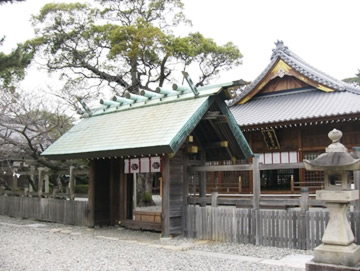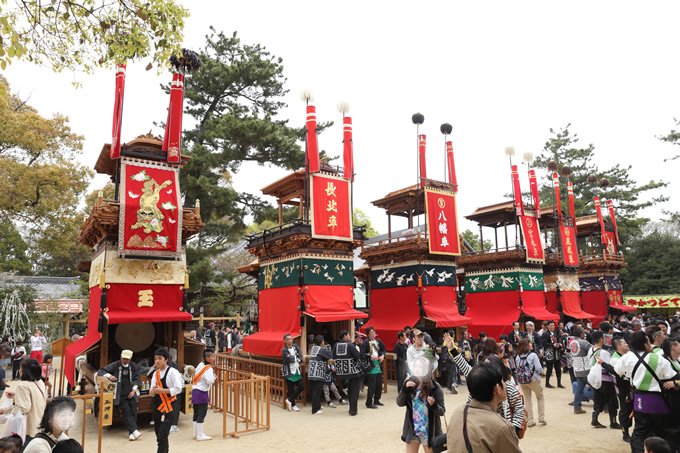

It is called a Shinto shrine in English. Its most important building is used for the safekeeping of sacred objects. Japanese people believe that kami live in jinja. Kami are the spirits that are worshipped in the Shinto religion. However, Shinto is unlike other major religions. In Shinto, there is no founder and no sacred bible.
Kami are similar to human beings and respond to human prayers because kami are animals, elements in nature and spirits of deceased reverends. Many kami are considered the ancient ancestors of entire clans, and some ancestors became kami upon their deaths in case they were able to embody the values and virtues of kami in life. Shinto tradition says there are so many kami that the number is impossible to count.
Each jinja enshrines different kami but basically, jinja is the place to thank kami or to pray for other people’s wish. Jinja is not only the house of kami. It has been the base place for keeping safe of local community and country. Moreover, people have been rely on jinja with their heart and soul. Thus, you can see jinja everywhere in Japan. That signifies jinja is a familiar place to Japanese people.
1. Make a slight bow
2. Throw change in the offering box
3. Bow twice deeply
4. Clap your hands twice
5. Bow once deeply

We don’t know when this jinja was built exactly, but we infer that it was built in the 700s by seeing the name of the local place and a stratum.
 We enshrine one of the kami which is “Susaonomikoto” (須佐之男命).
We enshrine one of the kami which is “Susaonomikoto” (須佐之男命).
We worship this kami as a competition or a game. Furthermore, Takeo Jinja enshrines “Oyamazuminomikoto” (大山祗命), “Toyoukehimenomikoto” (豊受姫命), “Yamatotakerunomikoto” (日本武命),
“Michizane Sugawara price”(菅原道真公), “Kukurihimenomikoto”(菊理姫命), “honomusuhinomikoto”, (火結乃命) “Omononusinomika”(大物主神).
These seven kami are named “Nagaonanamiya”. That indicates jinja enshrined several kami in Japan.
In 1221, After Jokyu war, Mr. Iwata came to this place as a feudal lord and he built the Nagao castle. He established Takeo Jinja (this jinja) in the Nagao castle in order to guard it safely.
 Once a year, each of the six districts of Taketoyo dedicate six dashi (parade floats) to Takeo Jinja on April 15th. Taketoyo people hold this festival as a big festival. When the parade floats enter or exit Takeo Jinja, they are very big and they excite people. The history of this festival goes back to the Edo generation (1603-1867). In the beginning of the Edo generation, one parade float which is called “Shinhichisya” was dedicated to Takeo Jinja. In addition, in 1660 Mr. Ohshima became the feudal lord of Taketoyo and donated a mikoshi (portable shrine) to this place. Mikoshi and parade floats are different. Mikoshi are carried on people’s shoulders but dashi (parade floats) are pulled with a rope to be moved. Taketoyo held the festival by using this mikoshi and it was called “the biggest festival around this place”.
Once a year, each of the six districts of Taketoyo dedicate six dashi (parade floats) to Takeo Jinja on April 15th. Taketoyo people hold this festival as a big festival. When the parade floats enter or exit Takeo Jinja, they are very big and they excite people. The history of this festival goes back to the Edo generation (1603-1867). In the beginning of the Edo generation, one parade float which is called “Shinhichisya” was dedicated to Takeo Jinja. In addition, in 1660 Mr. Ohshima became the feudal lord of Taketoyo and donated a mikoshi (portable shrine) to this place. Mikoshi and parade floats are different. Mikoshi are carried on people’s shoulders but dashi (parade floats) are pulled with a rope to be moved. Taketoyo held the festival by using this mikoshi and it was called “the biggest festival around this place”.
As you can see, this festival has been held by Taketoyo people since the Edo generation, even though the way of festival was changing.
Another name for Takeo Jinja is “Tsukuyominomori”. It means a grove for composing tanka under the moon. Tanka is Japanese poem. In the Edo generation, people assembled in the Takeo Jinja under the harvest moon to compose a tanka. Some tanka are still dedicated to Takeo Jinja now. Takeo Jinja is also a famous place to see the moon.
Taketoyo(武豊)’s first character comes from Takeo Jinja(武雄神社)’s first character of a word.
Taketoyo’s “Take” means Takeo Jinja’s “Take”.
As you can see, Takeo Jinja has a long history and has been protected by townspeople, generation after generation.
| The name of Shinto shrine | Takeo Jinja |
| Enshrined Deities | Susaonomikoto |
| Grade of shrine | Grade 4 |
| The chief priest of a Shinto shrine | Takao Iwata |
| Address | 8 Age Taketoyo-cho, Chita-gun, Aichi-ken, 470-2332, Japan |
| Phone number | 0569-72-0631 |
 Ohuda bears the name of a shrine or an enshrined deity/ies (you can see Kanji on it). You can worship a shrine through ohuda. The first ohuda (天照皇大神宮) is provided by the Ise Shrine, and the second (武雄神社大麻) is provided by the Takeo Shrine (Takeo Jinja).
Ohuda bears the name of a shrine or an enshrined deity/ies (you can see Kanji on it). You can worship a shrine through ohuda. The first ohuda (天照皇大神宮) is provided by the Ise Shrine, and the second (武雄神社大麻) is provided by the Takeo Shrine (Takeo Jinja).
When you worship ohuda(amulet or talisman) provided by a shrine, you don’t need to throw change.
 Once a year, each of the six districts of Taketoyo dedicate six dashi (parade floats) to Takeo Jinja on April 15th. This cellphone charm’s dashi is designed by one of these dashi.
Once a year, each of the six districts of Taketoyo dedicate six dashi (parade floats) to Takeo Jinja on April 15th. This cellphone charm’s dashi is designed by one of these dashi.
 You can write your word of honour on it.
You can write your word of honour on it.